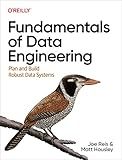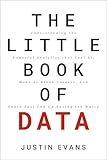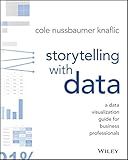Best Data Processing Guides to Buy in December 2025

Fundamentals of Data Engineering: Plan and Build Robust Data Systems



The Little Book of Data: Understanding the Powerful Analytics that Fuel AI, Make or Break Careers, and Could Just End Up Saving the World



Designing Data-Intensive Applications: The Big Ideas Behind Reliable, Scalable, and Maintainable Systems



Storytelling with Data: A Data Visualization Guide for Business Professionals
- MASTER DATA VISUALIZATION TO ENHANCE STORYTELLING IMPACT.
- PRACTICAL TIPS FOR CREATING COMPELLING, CLEAR GRAPHICS.
- BOOST DECISION-MAKING WITH EFFECTIVE DATA COMMUNICATION.



Data Pipelines Pocket Reference: Moving and Processing Data for Analytics



Data Analytics, Data Visualization & Communicating Data: 3 books in 1: Learn the Processes of Data Analytics and Data Science, Create Engaging Data ... Present Data Effectively (All Things Data)



Linear Algebra for Data Science, Machine Learning, and Signal Processing



Spark: The Definitive Guide: Big Data Processing Made Simple


To combine two pandas series, you can use the append() method or the concat() function.
To combine two pandas series using the append() method, you can simply call the append() method on one of the series and pass the other series as an argument. This will append the values of the second series to the first series.
Another way to combine two pandas series is to use the concat() function. You can pass a list of series that you want to combine as an argument to the concat() function. This will concatenate the values of the series into a single series.
Both methods will result in a new pandas series that contains the combined values of the original series.
How to handle NaN values when combining two pandas series?
When combining two pandas series, you can handle NaN values in the following ways:
- Use the concat() function with the ignore_index=True parameter to concatenate the series, treating NaN values as missing values:
combined_series = pd.concat([series1, series2], ignore_index=True)
- Use the fillna() function to fill NaN values with a specific value before combining the series:
series1 = series1.fillna(0) series2 = series2.fillna(0) combined_series = series1 + series2
- Use the combine_first() function to combine two series, filling NaN values in the first series with values from the second series:
combined_series = series1.combine_first(series2)
Choose the method that best suits your data and analysis needs.
What is the difference between concat and append in pandas?
In pandas, concat() and append() are both used to combine multiple DataFrames. However, there are some key differences between the two methods:
- concat() allows you to combine multiple DataFrames along either rows or columns, by specifying the axis parameter. It can also handle more complex merge operations, such as joining DataFrames based on a common index or column. Example: pd.concat([df1, df2], axis=1)
- append() is a simpler method that is used specifically to append a single DataFrame to another DataFrame along the rows. It is a shorthand way of calling pd.concat() with axis=0 and can only be used to add rows to an existing DataFrame. Example: df1.append(df2)
In summary, concat() is more versatile and can be used for more advanced merging operations, while append() is a convenient method for simply adding rows to a DataFrame.
How to align the indexes when combining two pandas series?
You can align the indexes of two pandas Series when combining them by using the .combine_first() method or the pd.concat() function.
Here's how you can do it with .combine_first():
import pandas as pd
Creating two pandas Series with different indexes
s1 = pd.Series([1, 2, 3], index=['a', 'b', 'c']) s2 = pd.Series([4, 5, 6], index=['b', 'c', 'd'])
Combining the two Series and aligning the indexes
combined_series = s1.combine_first(s2)
print(combined_series)
Output:
a 1.0 b 2.0 c 3.0 d 6.0 dtype: float64
Alternatively, you can also use pd.concat() to align the indexes:
import pandas as pd
Creating two pandas Series with different indexes
s1 = pd.Series([1, 2, 3], index=['a', 'b', 'c']) s2 = pd.Series([4, 5, 6], index=['b', 'c', 'd'])
Combining the two Series and aligning the indexes
combined_series = pd.concat([s1, s2])
print(combined_series)
Output:
a 1 b 2 c 3 b 4 c 5 d 6 dtype: int64
Both methods will align the indexes of the two Series when combining them.
